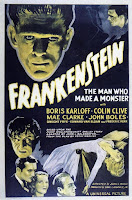In 1992, David Lynch was involved in a welter of projects,
including producing the soundtrack for Twin
Peaks: Fire Walk with Me, which some (myself included) rate as the finest
non-pop soundtrack album of all time. It would feature the sounds most associated
with Lynch and his musical main-man Angelo Badalamenti: jazz percussion,
guttural double bass, and dreamy synths.
At the same time, Lynch and Badalamenti were dabbling with a
side project that used those signature sounds as a foundation to graffiti with dreadful
drones and disturbed spoken-word yarns. They called the project Thought Gang, a
good name considering the music’s dual goals of stimulating your intellect with
its jazz overtures and assaulting you with its demanding discordance and sheer
scariness.
While any plans to release the project in the nineties
didn’t come to be, significant chunks of Thought Gang’s music emerged, most
notably “A Real Indication”, “The Black Dog Runs at Night”, and “Frank 2000” in
Fire Walk with Me (though only the first
two tracks made its soundtrack album) and the hip-hop-ish “One Dog Bark” in the
“Missing Pieces” bonus feature on the Fire
Walk with Me Blu-ray.
Now, 26 years after the project began, Thought Gang is finally receiving a proper release from Sacred
Bones Records. Not surprisingly, the two weirdest tracks from the Fire Walk with Me soundtrack sound
practically prosaic in the context of this other stuff. “A Meaningless
Conversation” is as queasy as music gets and the concluding two tracks, “Frank
2000” and “Summer Night Noise”, drop the rhythmic safety net altogether for
more than 25 minutes (and nearly half of the album’s run time) of nightmarish
noise. Thought Gang sounds like the lost soundtrack to a David Lynch movie so
disturbing it was permanently shelved. If that sounds appealing to you, dive in
and brace yourself for nightmares.



















